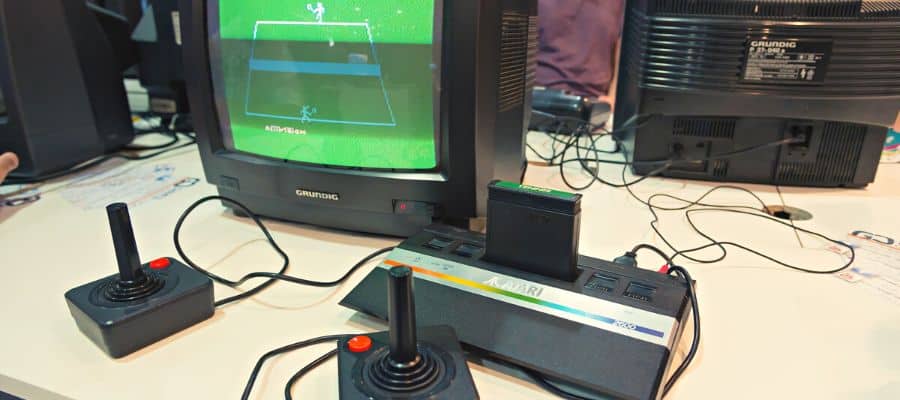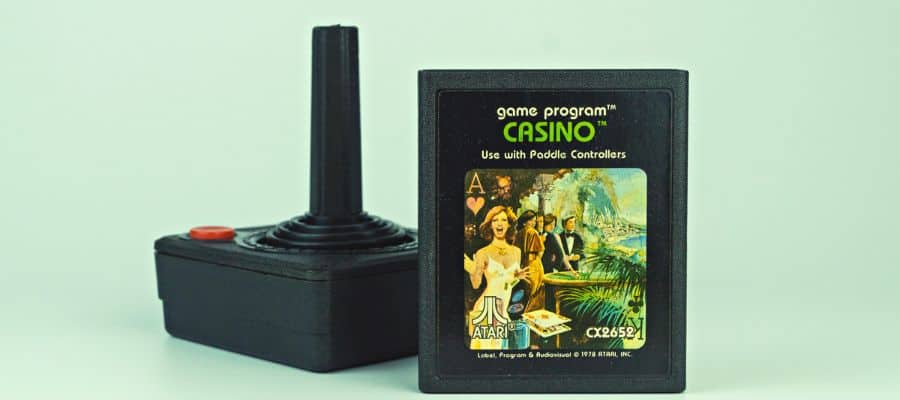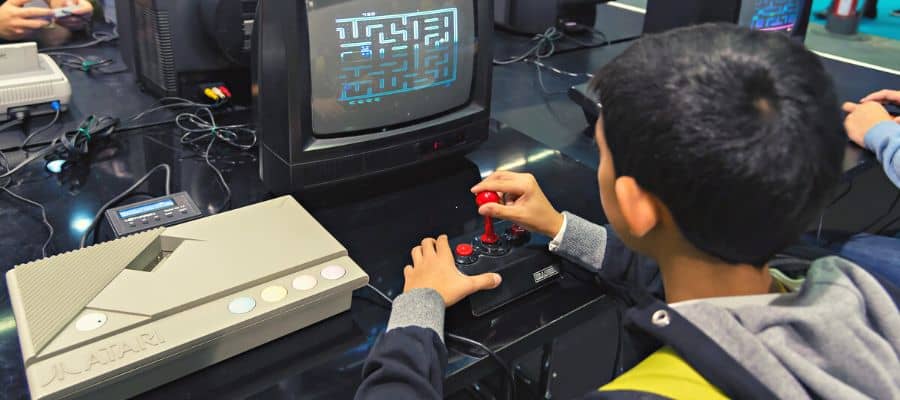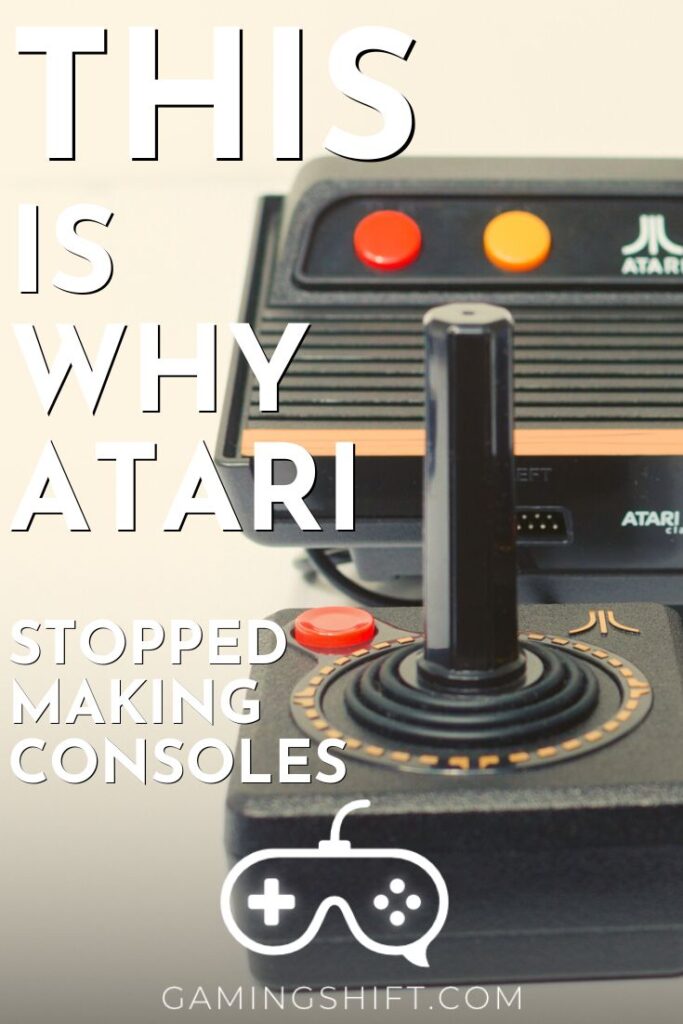If you were a kid growing up in the 1970s, you’d be very familiar with the Atari name as they helped establish the arcade and home video console industry. The earliest and most influential games of that era such as Pong, Space Invaders, and Asteroids were all made by Atari. But something went wrong in the early 1990s, and Atari suddenly vanished from the market.
This is why Atari stopped making consoles. Management changes led to delayed release schedules, which eroded Atari’s influence on the video game market in the wake of Nintendo and Sega’s arrival. That, and the deluge of low-quality games such as E.T. that were released during the early 1980s, killed Atari’s reputation as a video game company.
No matter how you look at it, Atari’s fall from grace was a tragic affair. You had this innovative, trend-setting company that laid the foundation for the entire gaming industry. And its fire burned bright for a decade, before vanishing into the darkness of irrelevance.
Atari’s History

When you think of really old video games that are still relevant to this day, Pong and Asteroids come to mind. That’s because these games are thoroughly entertaining despite their simplicity. Come to think of it, they were created in the mid-1970s which was nearly half a decade ago.
It’s hard to believe that video game consoles as we know them today saw their birth that far back, but Atari pulled it off. They took existing technology (MOS 6502 microprocessor) and tweaked it to create a product that was both capable and affordable. Atari designed the VCS to be cheap, it didn’t even have a frame buffer.
The processor was a simplified version of the cutting-edge 8-bit MOS 6502 with fewer pins to lower manufacturing costs. CRT TVs back didn’t even use auxiliary AV cables, so the Atari VCS console had an RF output that would send the video signal to a modulator box.
What Happened To Atari?
Atari had been making video games since the early days and knew how to deliver an excellent experience at an affordable price. But all this changed during the early 1980s because some developers used the Atari license to develop shovelware. These games weren’t built with passion or creativity, but designed for the sole purpose of hoodwinking a potential buyer with fancy box art to make a quick buck.
Cheaply made games like E.T. led to the video game crash of 1983, which tanked Atari’s profits and brand image. Nintendo arrived to save the North American gaming market in 1985, with their NES which was superior to anything Atari had. It also had better games, a lot of which were exclusive- Mario, Zelda, Final Fantasy, etc.
Atari’s management just couldn’t get the winning formula back and released one mediocre console after another. Sure, the 7800 wasn’t terrible and performed quite well for its price but you simply had no compelling games on it. Atari went through a series of mergers, acquisitions, and sales that tore the company apart and most of its original team quit.
Jaguar was the company’s swansong, and they tried to make it work with an aggressive marketing campaign. But the console ultimately flopped (once again, due to a dearth of decent games). In 1996, Atari discontinued the ill-fated Jaguar and resigned from the games industry.
What Year Did Atari Stop Making Consoles?
Eventually, Atari was hemorrhaging money left and right. Their home computer division lost out to Apple and IBM in the 1980s, and their video game division was in the red. A series of acquisitions, mergers, and leadership changes followed.
This pretty much sealed the company’s fate during the early 1990s. Atari made one last try with the ill-fated Jaguar, which was a powerful but overly complex console with no real games (history repeats itself). In 1996, the Jaguar was discontinued and Atari was sold off once again.
Why Did Atari Fail?

Ironically, it was the advent of video game cartridges that laid the groundwork for Atari’s failure. Before the Atari VCS, game consoles would come preloaded with a set of 5, 6, or 10 games. And that’s all you got, so the profitability of a console was directly linked to the quality of games it had.
In fact, they weren’t even called consoles back then. People just called them games. You would buy a game box, and play it.
But with the Atari 2600, developers realized that they had endless possibilities. You release a console and keep making games for it until the next decade. However, Atari made a grave mistake by not choosing to enforce quality controls- meaning that anybody could create a piece of software and release it for the system.
Things reached a boiling point in 1982 with the release of E.T. the Extra-Terrestrial, which was reviled by gamers and journalists alike. It tanked commercially and became synonymous with the very idea of a cheaply made cash grab. Atari’s reputation was forever tarnished, and the video game crash of 1983 came soon after.
Atari made several attempts to recover its lost glory during the 1980s, but none of it worked. The company just couldn’t get a break, and there weren’t enough good 3rd party developers willing to sign exclusive contracts. Eventually, Atari stopped making consoles altogether.
Why Did Atari Shut Down?
Multiple years of underwhelming commercial performance combined with frequent changes in management and business strategies was too much to bear. After the stock price of Warner Communications tanked from $60 to $20, it started looking for buyers who were interested in Atari’s game division.
The CEO and chairman of Atari, Raymond Kassar, resigned in 1983 after the video game crash. He was responsible for the success of the Atari 2600, and without him, the company lacked focus. Jack Tramiel (founder of Commodore) purchased the home computer and console divisions in 1984, and Warner sold the arcade division of Atari to Namco in 1985.
What Was Atari’s Last Console?

The Jaguar, which it marketed as the world’s first 64-bit game system. It wasn’t a true 64-bit system but it had a 64-bit bus for the blitter (which performed z-buffering and Gouraud shading). The console used dual 32-bit RISC processors (codename Tom & Jerry), along with a Motorola 68000 coprocessor.
Its complexity was daunting to developers, which prevented quality 3rd party titles from getting released on the system. Plus, the marketing campaign failed to capture an audience in the wake of Nintendo and Sega’s dominance. Jaguar was discontinued in 1996, 3 years after its launch in 1993.
Is Atari Making A Comeback?
Atari exists today as a subsidiary of the French company Atari SA (formerly Infogrames). It is a very different entity from the original Atari and doesn’t make AAA games or new consoles. Instead, it releases retro-themed games and sequels to popular titles such as Pong, Space Invaders, etc.
The company recently released a PC/ game system called the VCS. It is a throwback to the original VCS, with a sleek exterior and wooden panel on the front. However, the internal hardware isn’t designed by Atari.
It’s just a $199 PC that’s powered by a Ryzen 1606G APU. Thankfully, you can upgrade the M.2 SSD and RAM. This new VCS comes preloaded with Debian OS and some classic Atari games.
Conclusion
I hope this article helped you understand why Atari stopped making consoles. It is a tale of mismanagement, failure to adapt, and bad luck. Atari could never have predicted that the cartridge technology they pioneered and used to great success would bite them in the back by causing a video game crash.
Of course, they didn’t develop those bad games but they also didn’t enforce any quality control which resulted in the Atari 2600’s library filling up with shovelware. Once Nintendo and Sega arrived in the North American market, it was all but over for Atari. They could never stage a comeback in this highly dynamic and competitive market.
If you found this article useful, you may want to save this pin below to your Gaming board.

